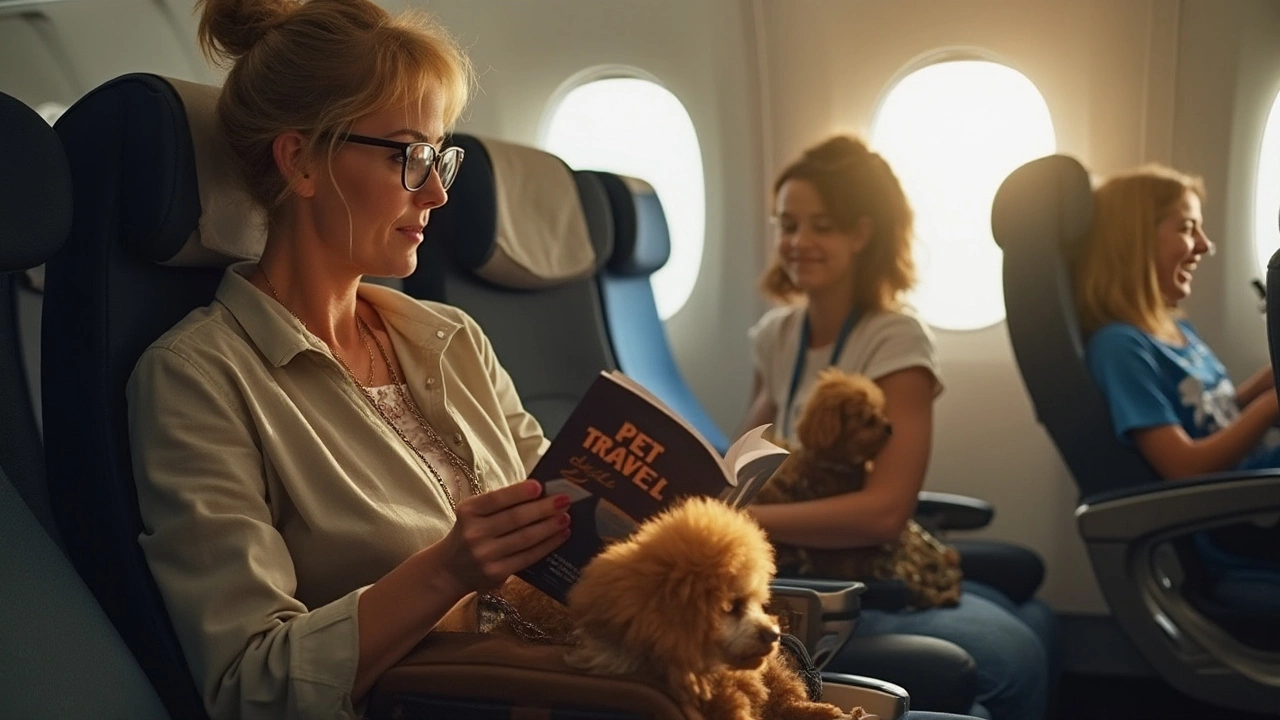Dog Plane Seat: How to Keep Your Pup Safe and Comfortable on Flights
Flying with a dog can feel like a big gamble, but it doesn’t have to be. The right seat choice, a proper carrier, and a few calm‑down tricks can turn a stressful trip into a smooth adventure for you and your pup.
Choosing the Right Seat and Carrier
First, check the airline’s pet policy. Some carriers are only allowed under the seat in front of you, while others can go in the cabin if they meet size limits. Measure your dog from nose to tail and compare it to the carrier’s interior dimensions – you want enough room for the dog to sit, turn, and lie down without forcing the carrier into a tight cabin space.
Look for a carrier that’s airline‑approved, has ventilation on all sides, and a secure zip or latch. Soft‑sided carriers are easier to fit under the seat, but hard‑sided ones protect against pressure when the plane bumps around. Many owners find a collapsible soft carrier with a sturdy frame works best for short trips, while a hard case is a safer bet for longer hauls.
When you book, request a seat near the front of the cabin if possible. Those rows experience less turbulence and allow quicker access to the lavatory if you need a quick bathroom break for your dog. An aisle seat also gives you a little extra wiggle room to slide the carrier in and out without blocking other passengers.
Preparing Your Dog for the Flight
Start a week before the flight by getting your dog used to the carrier. Put a favorite blanket or toy inside and encourage short stays, gradually increasing the time. This familiar scent helps calm the pup when the trip starts.
On travel day, feed a light meal about four hours before you head to the airport. A full stomach can cause nausea, but an empty belly may lead to low blood sugar. Offer water right up until you pass security, then give a small drink before boarding.If your dog gets anxious, talk to your vet about a low‑dose calming aid or a short‑acting anti‑nausea medication. Many owners swear by a pheromone spray inside the carrier, which mimics the comforting scent dogs release when they’re relaxed.
Arrive early so you have time to check in, go through security, and let your dog stretch a bit. At the metal detector, you’ll usually need to pull the carrier out of the bag for a separate scan – keep the carrier closed but easy to open.
During the flight, keep the carrier in its upright position and avoid moving it around. Talk to your dog in a calm voice, and if you have a window seat, let a little sunlight in – natural light can be soothing. Remember, most dogs are more comfortable staying still than pacing the aisle, so keep the carrier stable.
When you land, give your dog a chance to relieve itself right away. Most airports have a pet relief area near the arrivals gate. A quick walk and a drink of water will help your pup shake off any lingering stress.
With the right seat, carrier, and preparation, flying with your dog doesn’t have to be a nightmare. Follow these practical steps, and you’ll both arrive at your destination ready for the adventures ahead.
How to Secure a Seat for Your Furry Friend on a Plane
When planning a trip that includes your four-legged friend, it's essential to know the rules about buying a plane seat for your dog. Some airlines allow dogs in the cabin under specific conditions, while others require pets to travel in cargo. This guide provides insights into the policies of various airlines, including tips for a comfortable journey. It also shares important considerations for ensuring a smooth travel experience with your beloved pup.
